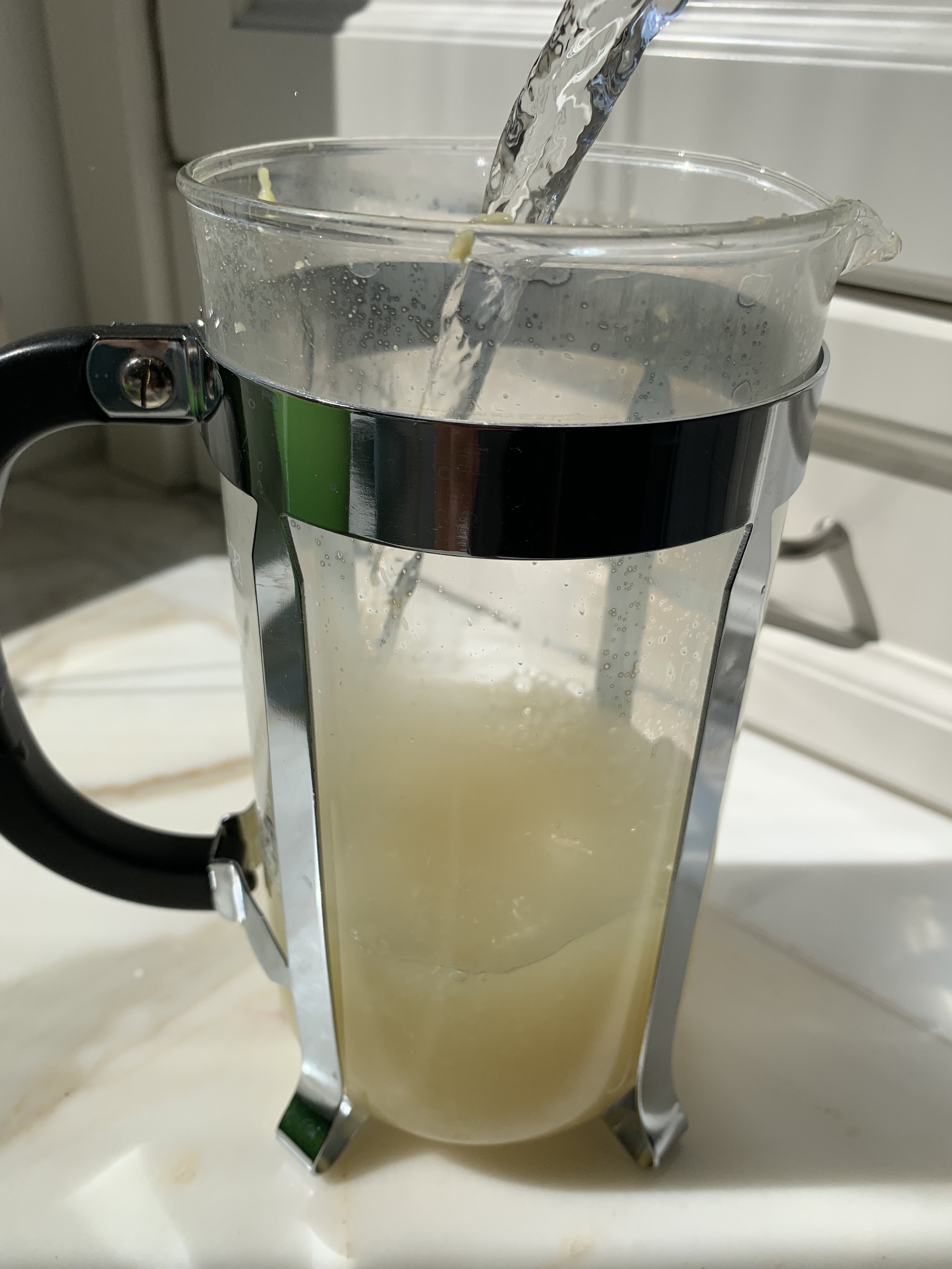Say Goodbye to Period Pain and Hello to Ginger: A Natural Solution
JUNE 2022
Tampons, pads, and painkillers: the essential pack for most people on their periods.
Historically, my periods and I have been 1-0. The cramps I’m familiar with leave me bed-ridden, throwing up, not eating, not sleeping, and not knowing what to do. I have been reliant on my fair share of Western medicine for these exact reasons (T3, included). As I’ve immersed myself more in the holistic world, Eastern healing modalities have become a huge fascination of mine. Could there be a non-invasive, non-hormonal, and actually good-for-me solution? Could something other than my neon orange prescription bottle really help? I present to you: ginger. Skeptic-turned-believer, I’ll be the first to admit that I had my doubts. Read on to learn about an unconventional, but potentially effective, way to kick that period pain to the curb!
THE “WHAT” - getting to know this powerful herb
Ginger is a hero herb among anti-inflammatories. It has been used for thousands of years, dating back to Ancient Indian Ayurveda and Traditional Chinese Medicine, for digestive support, migraines, arthritis, hypertension, chemotherapy nausea, pregnancy nausea and more. Most notably for us, ginger has been found to be “as effective as mefanamic acid and ibuprofen in relieving pain in women with primary dysmenorrhea,” in some studies. (Note: primary dysmenorrhea refers to what we know as the usual cramps, not attributed to any more serious condition).
THE “HOW” - explaining the holistic approach
Prostaglandins – hormone-like chemicals that cause the uterine muscles to contract – are responsible for a) the period itself and b) the cramps. Ginger, in its anti-inflammatory nature, works to suppress the prostaglandins and relax the uterine and abdominal muscles, reducing pain.
If, at this point, you’re wondering if you can eat ginger instead of taking Advil, my answer is yes. If that’s not your cup of tea, you can try sipping on one instead:
1. Put water to boil in kettle or pot
2. Peel a large chunk of ginger (approx. 3” knob)
3. Microplane the ginger into a pot or mug (grating or chopping finely will do if no microplaner)
4. Add boiling water and let steep for 10 minutes
5. Optional but recommended: add 1/2 tsp honey and a squeeze of lemon
Ginger is relatively simple to incorporate into your diet. My favourite way, aside from the tea, is in a smoothie or juice. You can also try it in a stir fry, soup, or curry.
THE “WHEN” - determining your ideal dose and timing
Different studies indicate different doses of effectiveness for ginger. For example, one study’s sample treatment plan concluded that 1500mg of ginger powder daily for three days (before and right at the beginning of the period) was an effective pain-reliever. The other trial protocol in the same study suggested that consuming ginger two days before the onset of a period was particularly effective in decreasing pain. Personally, I found eating raw ginger from the very beginning of my period to three days in to be helpful. So, if you do add ginger into your regimen, you have to find what works for you!
THE “WHY” - reviewing the Western approach
Why even bother looking into holistic pain remedies? Well, though fast-acting, NSAIDs and OTCs do have possible side effects. These include drowsiness, headaches, and indigestion. Taken in large amounts and especially often, NSAIDs and OTCs can also lead to toxic hepatitis (liver inflammation from a toxic substance) and can cause damage to the heart. That said, everything discussed here is not completely risk-free so as always, be sure to check with your health care specialist if you have any concerns or are on any medications already.
THE “WHERE” - finding the best product for you
If you’re curious about what ginger can do for you but you unsure where to start and/or don’t want to dive right into the root itself, here are some options:
Capsules: NFH, Now Foods, Organika
Powder: Organic Traditions
Tea: Traditional Medicinals, Pukka
Do you use herbs in your routine? Have you ever tried ginger for cramps before? Let me know in the comments below!
This blog does not contain medical advice.








